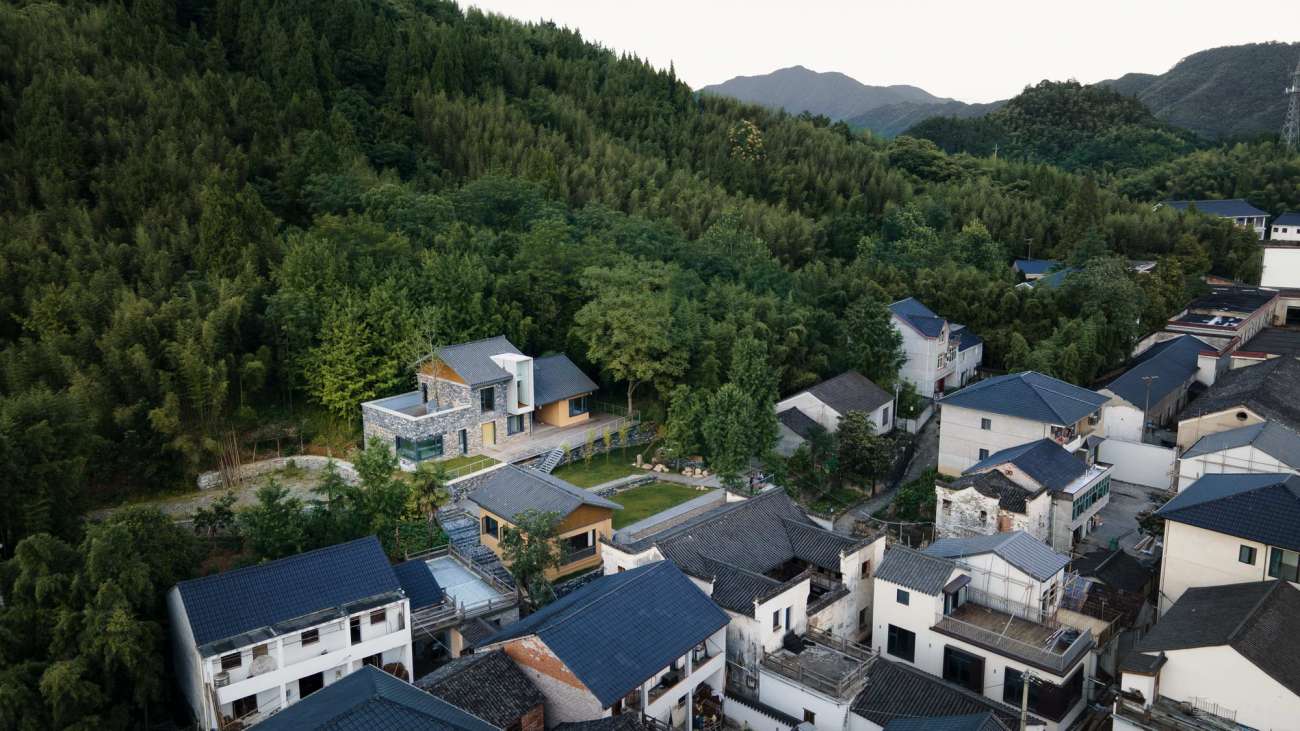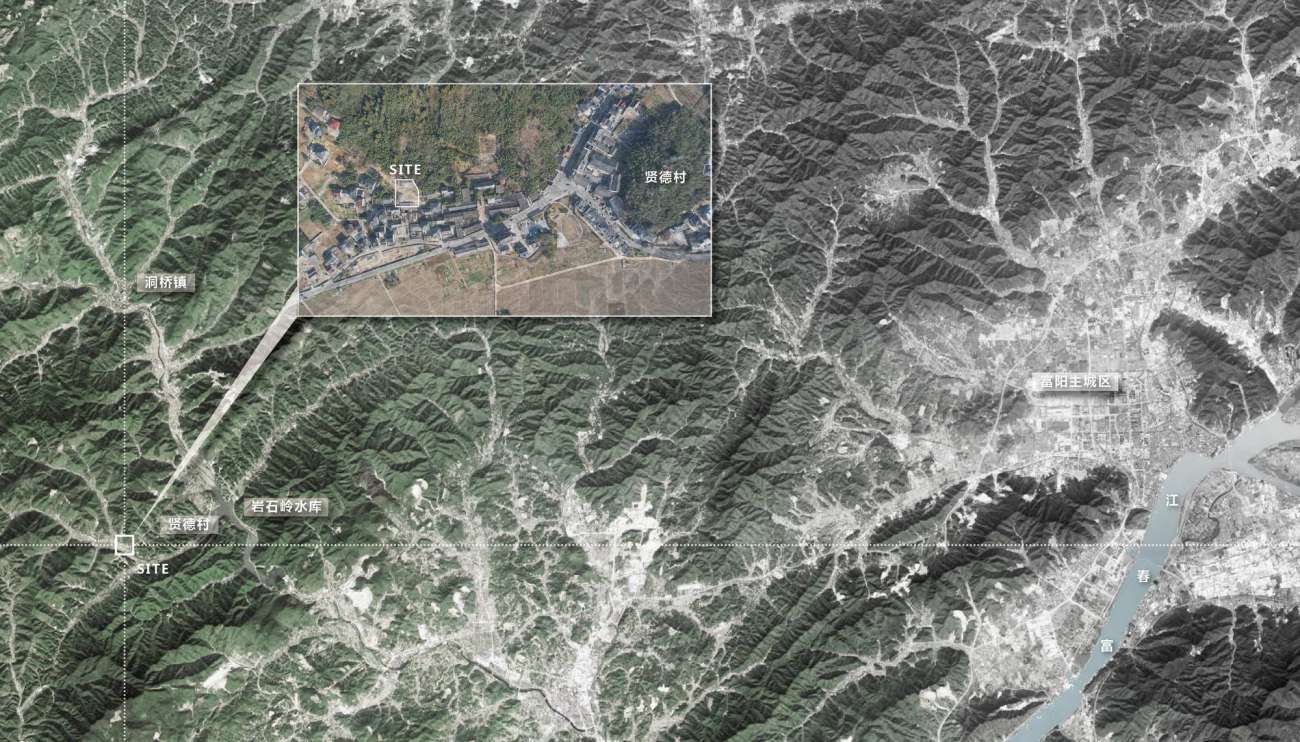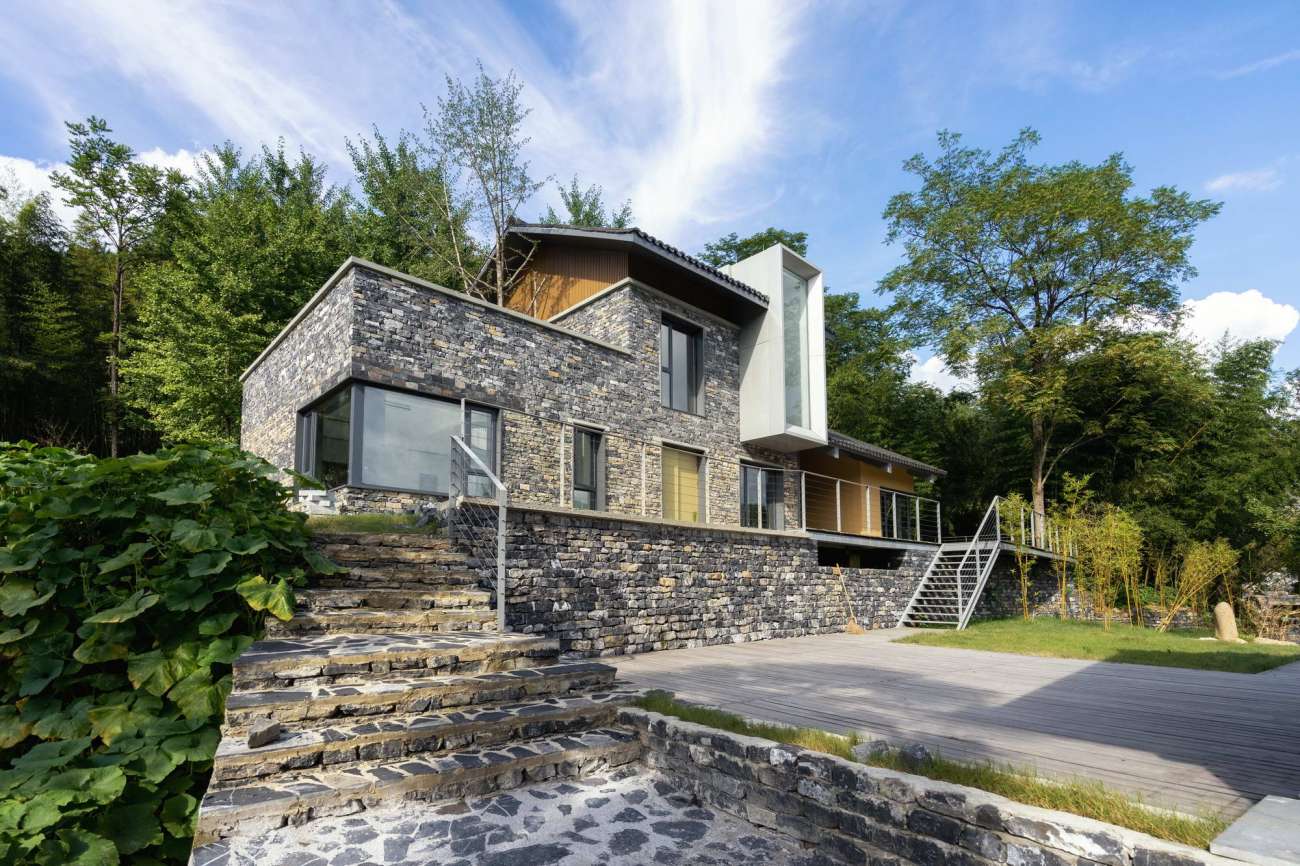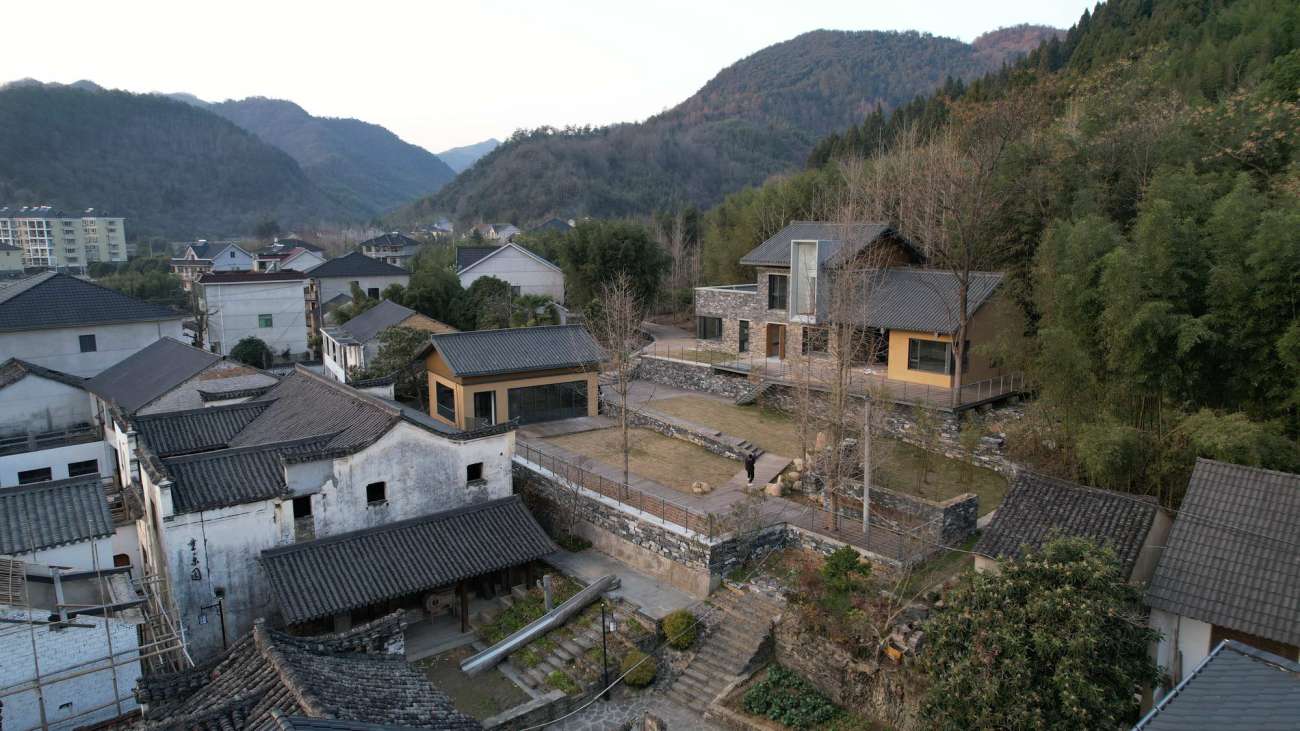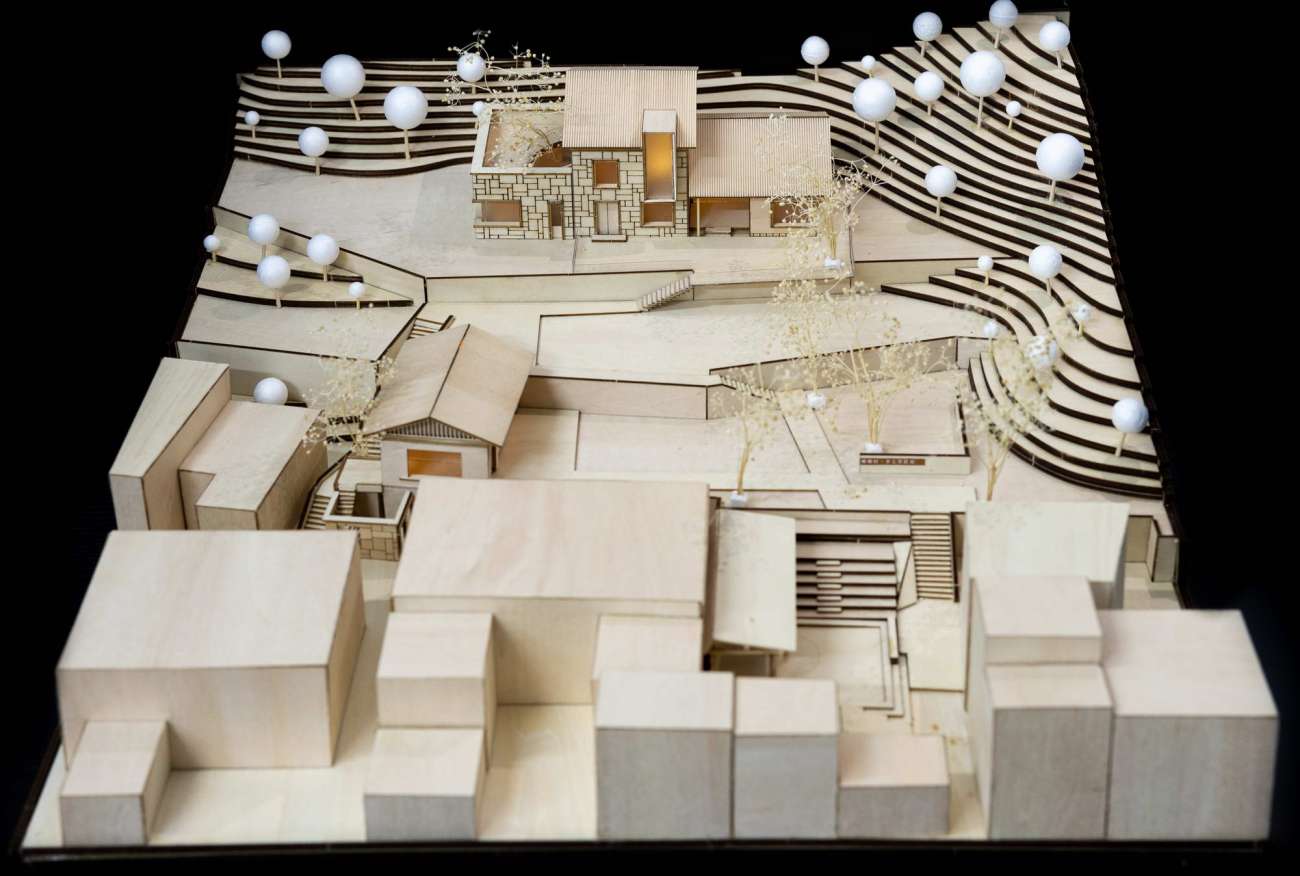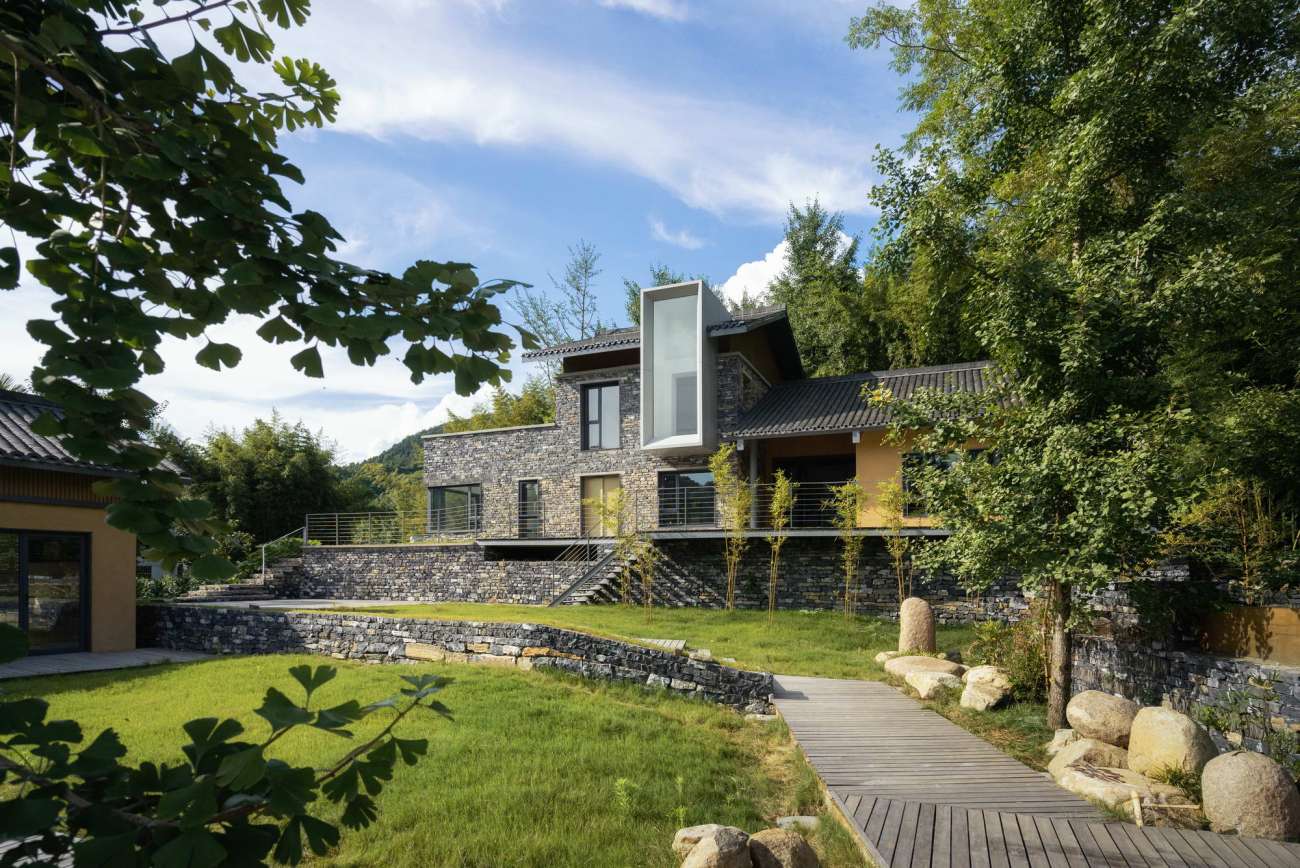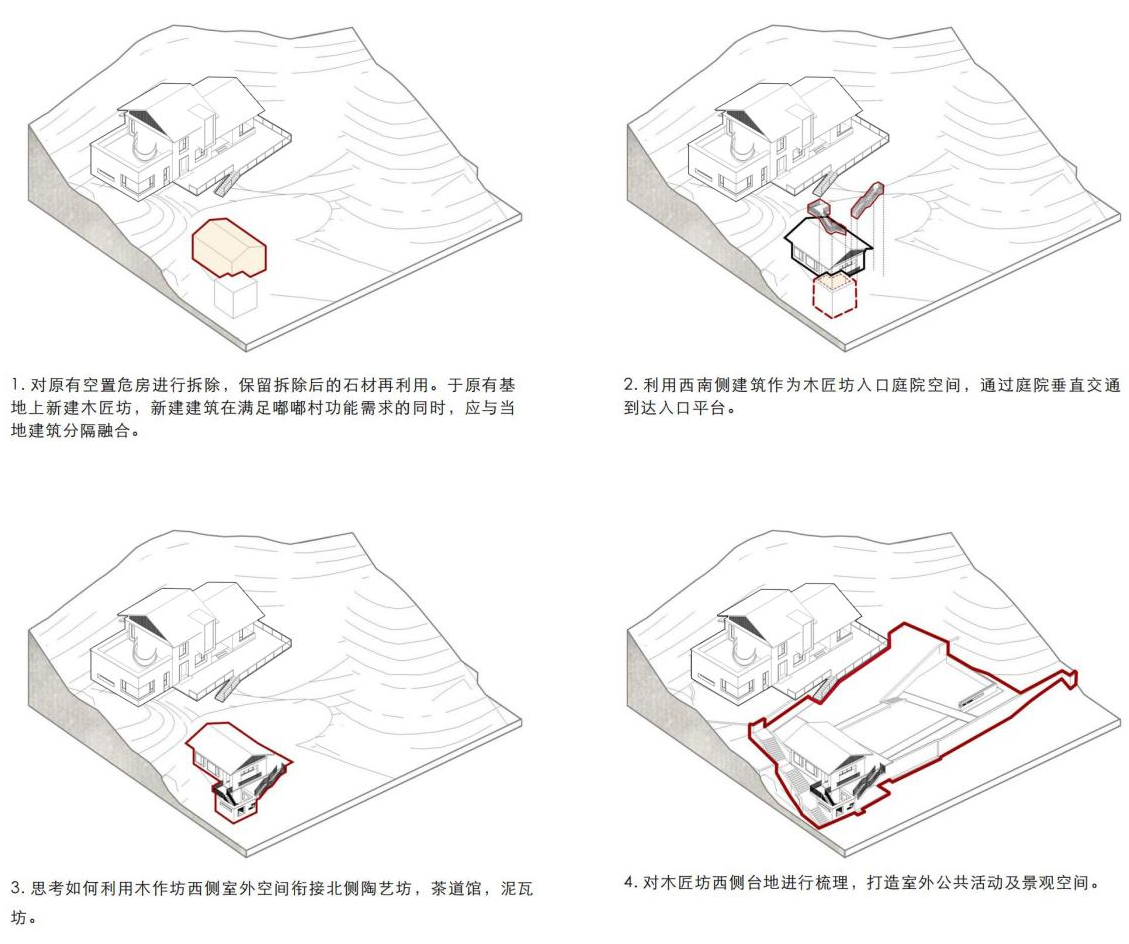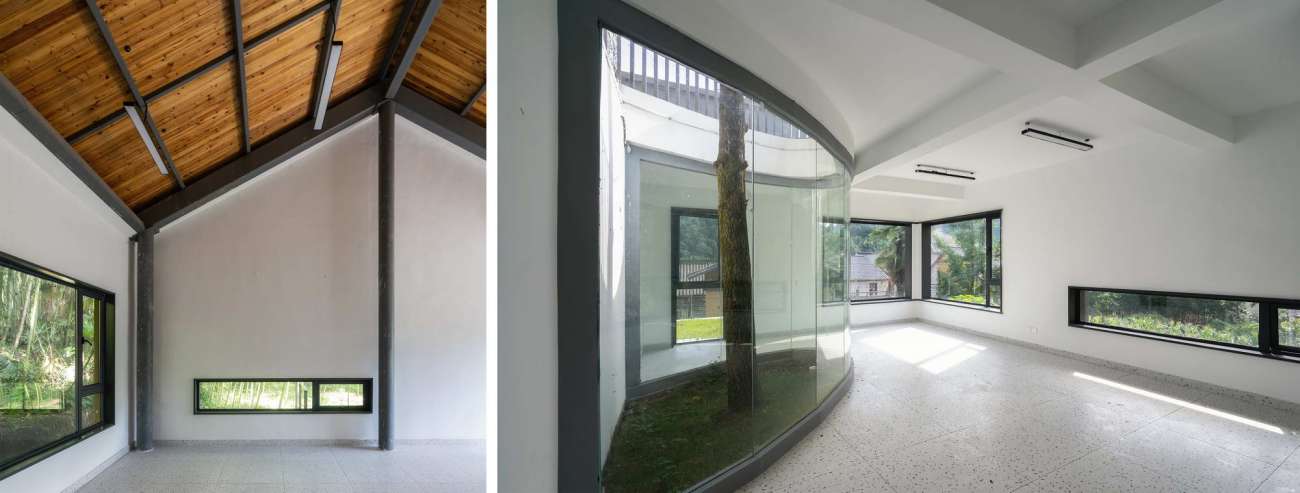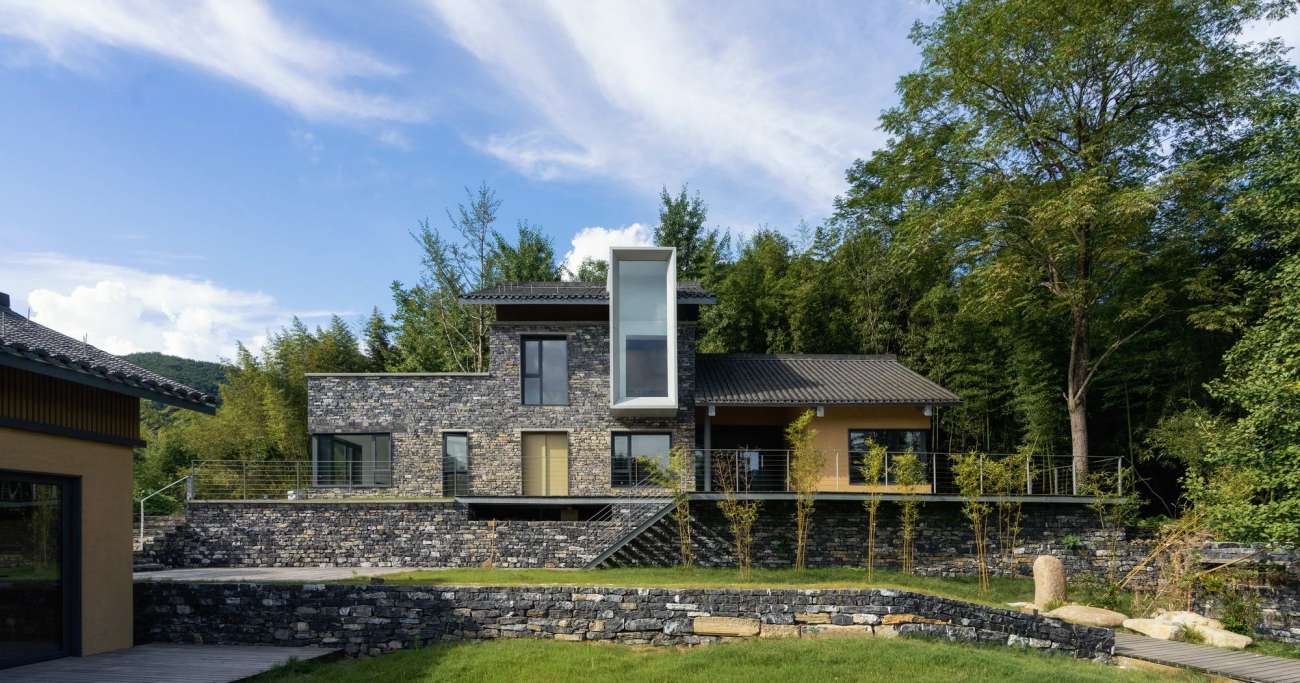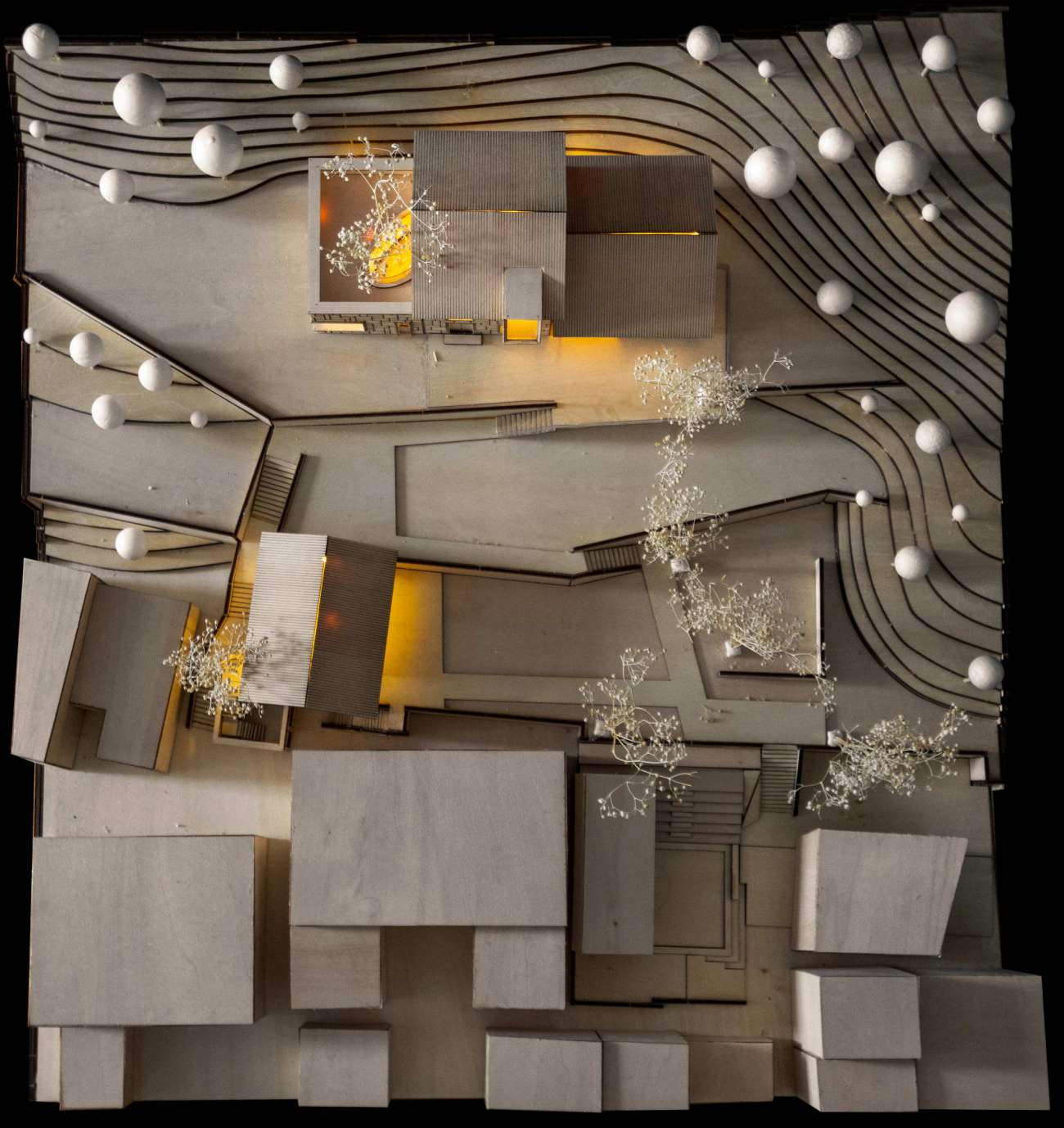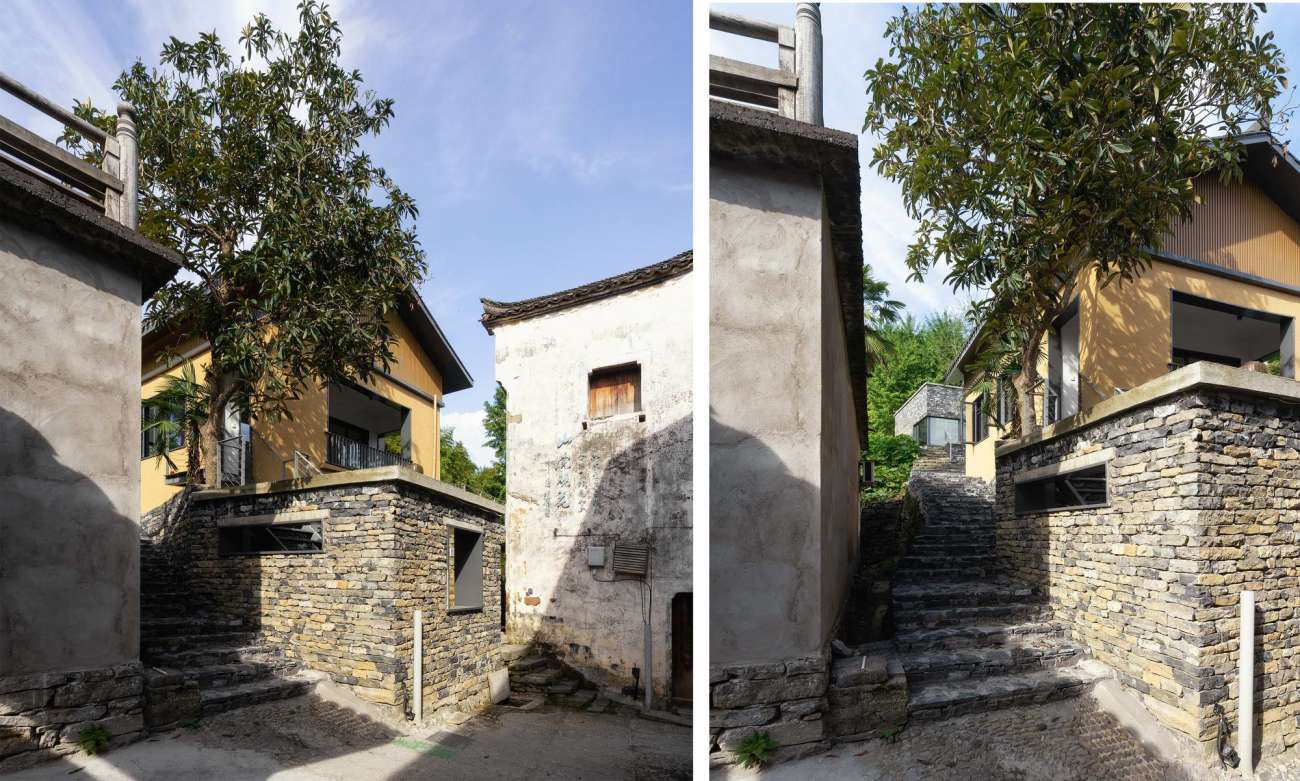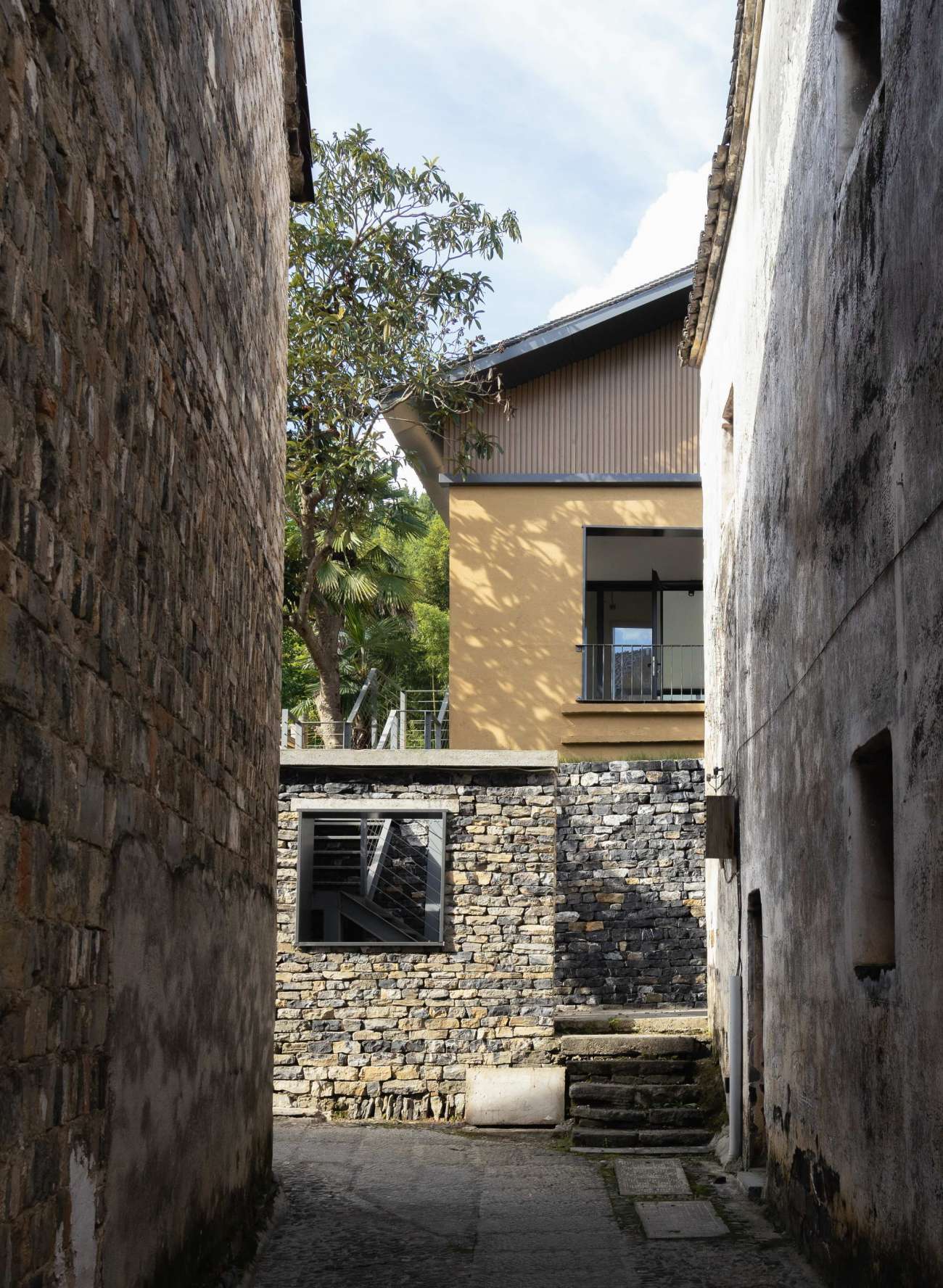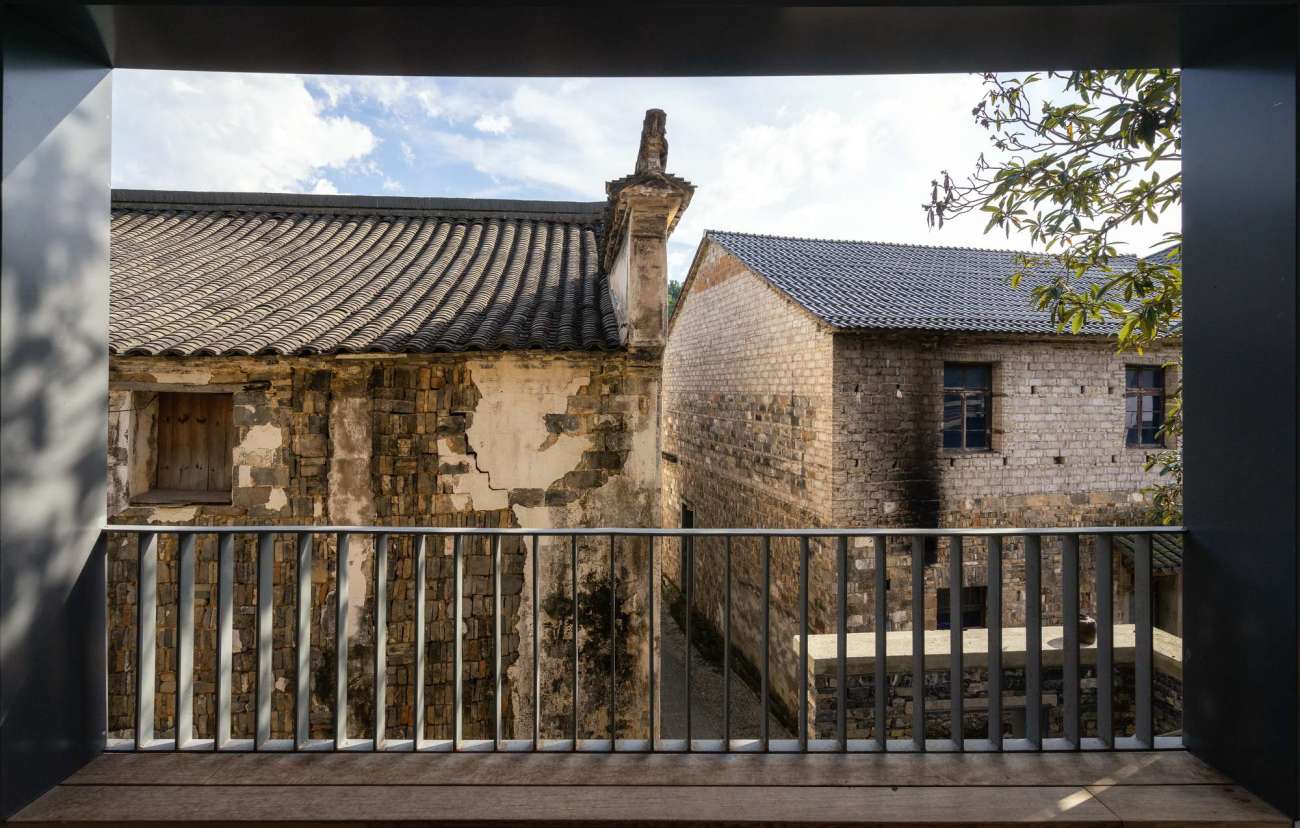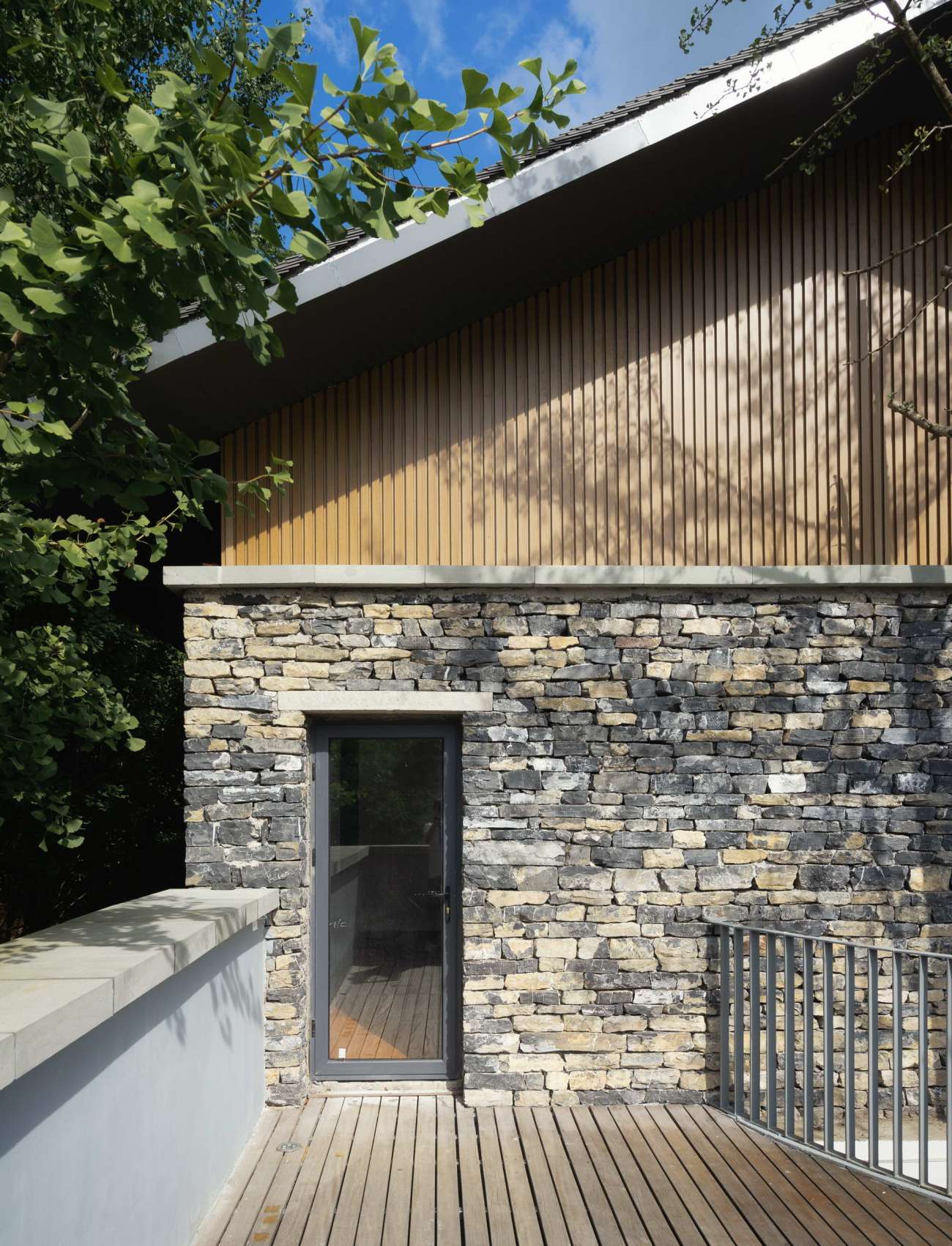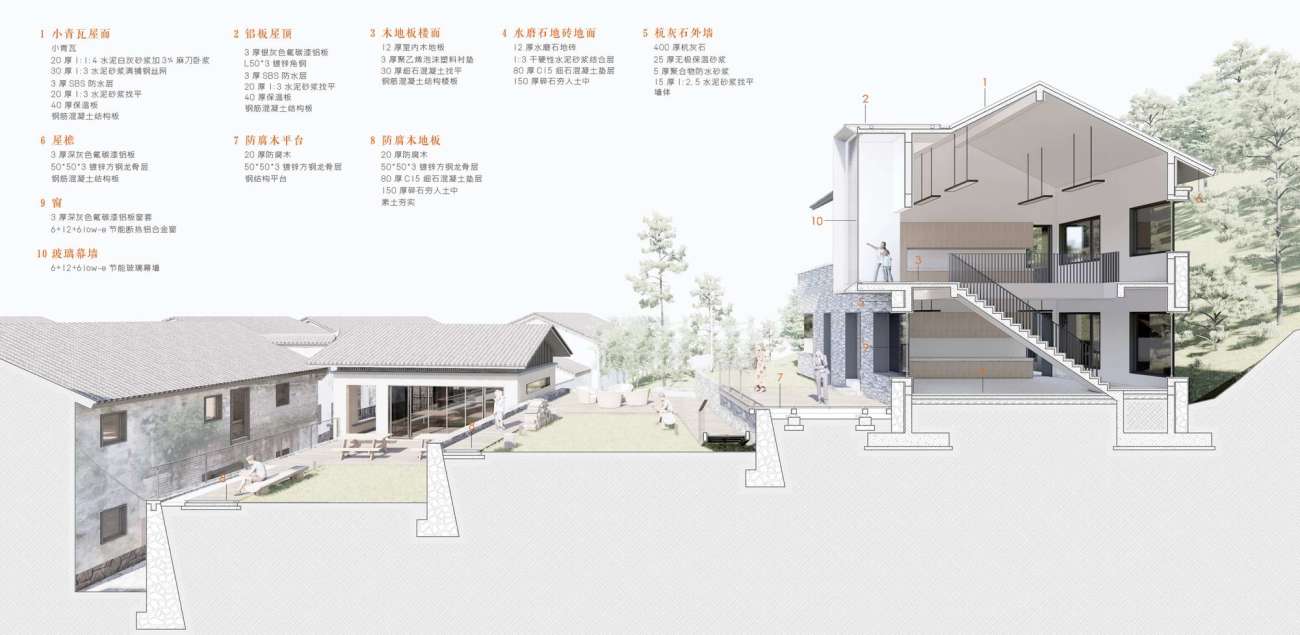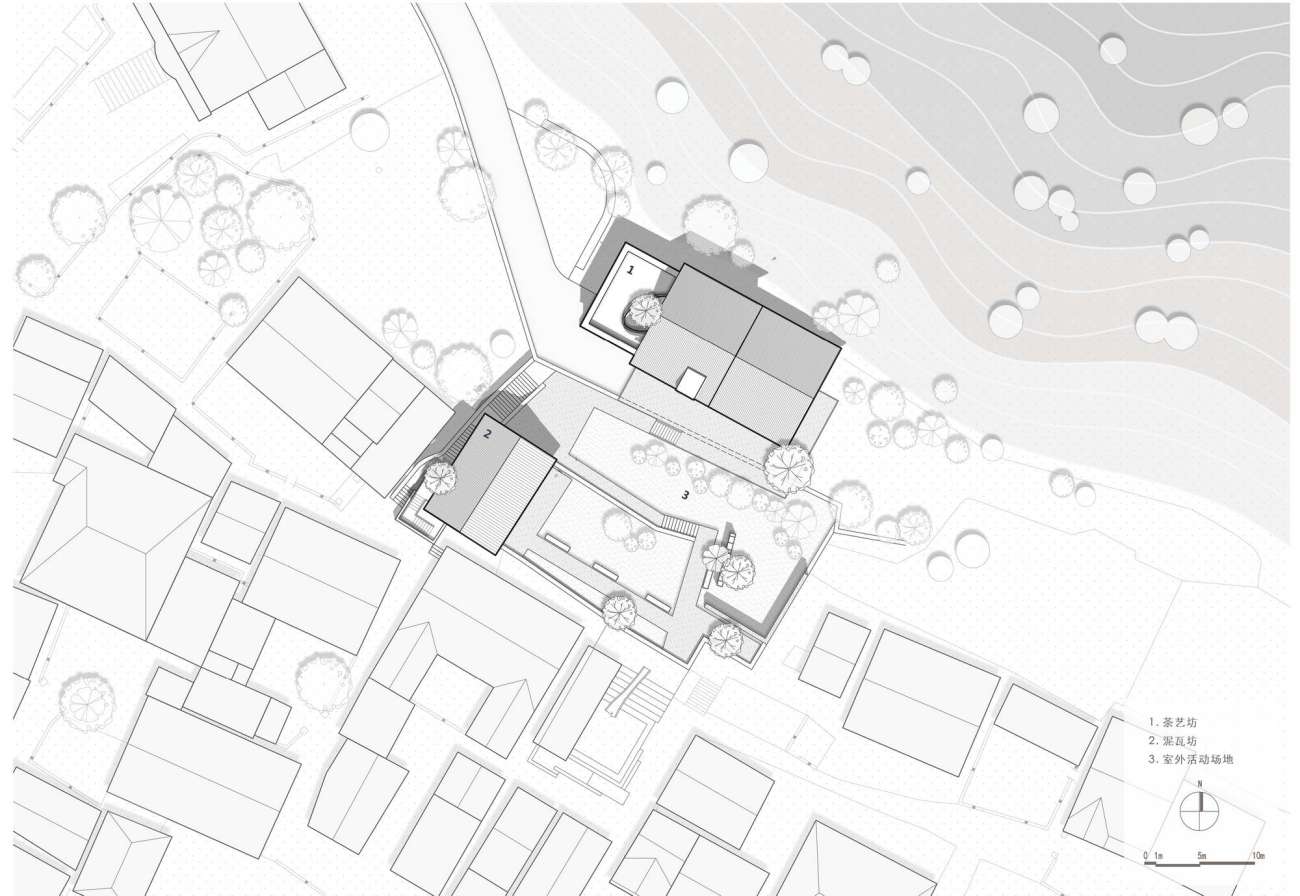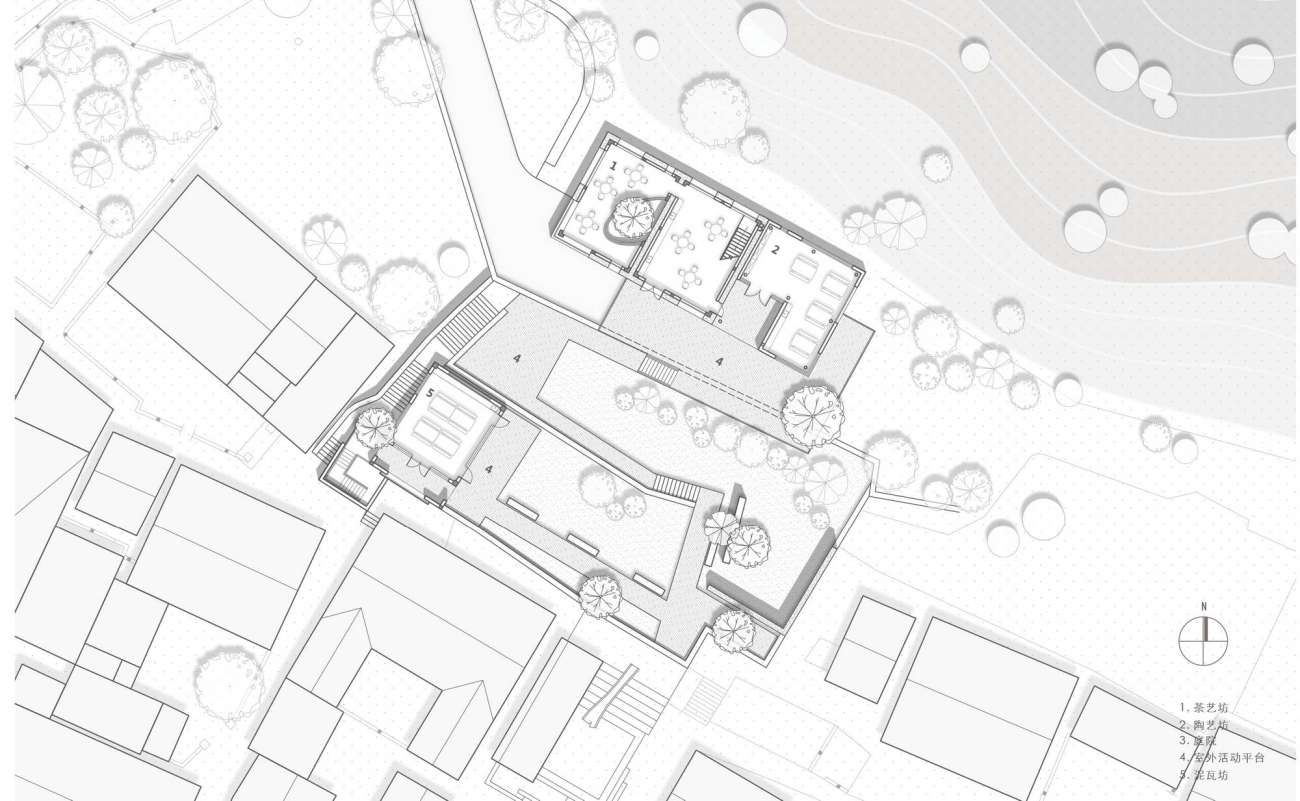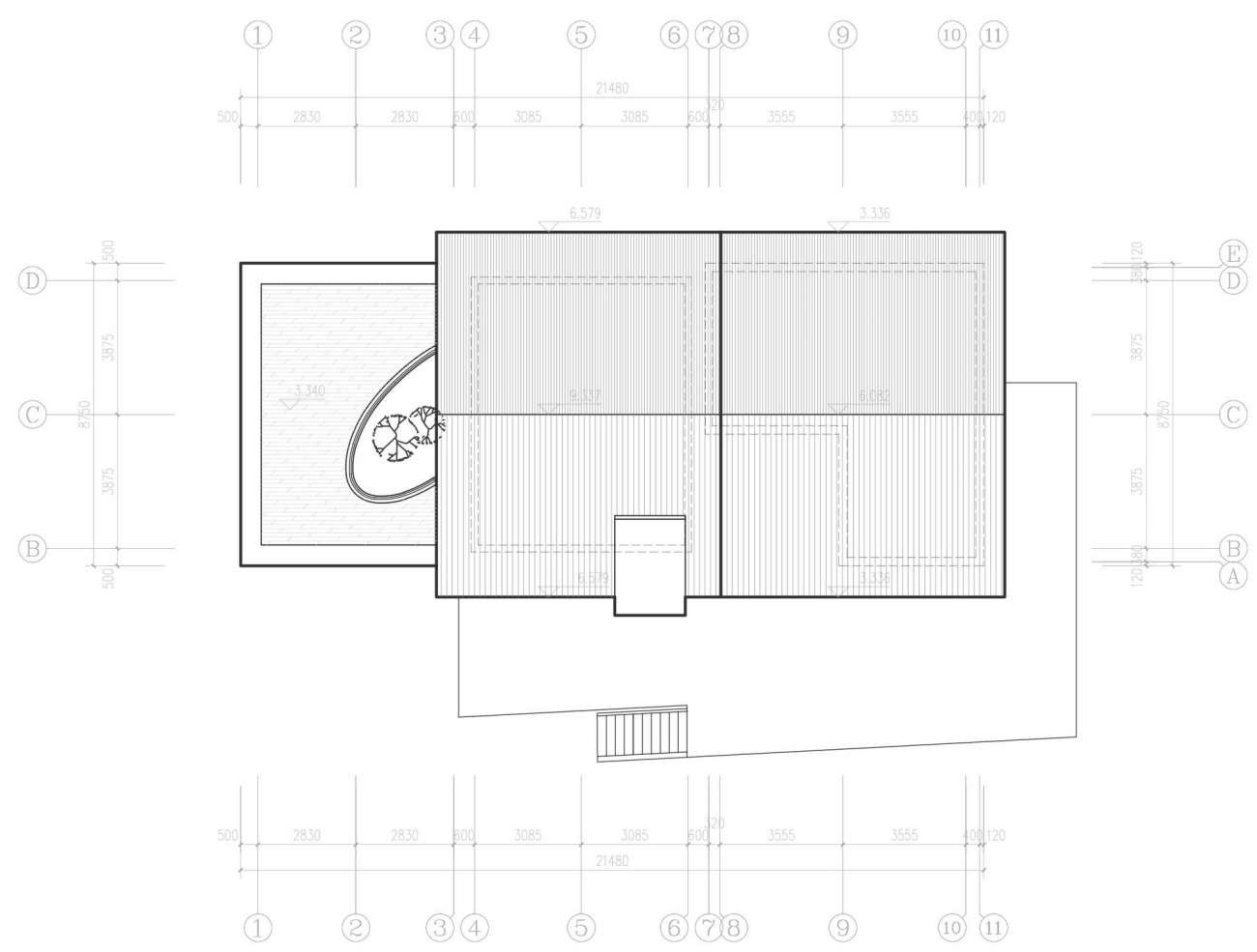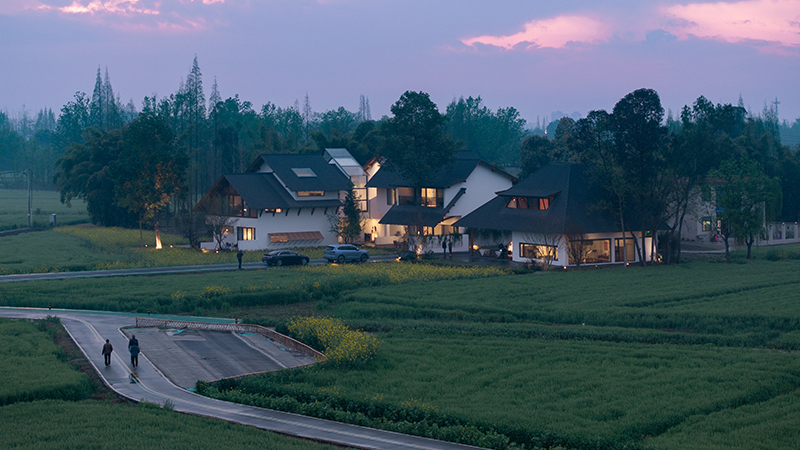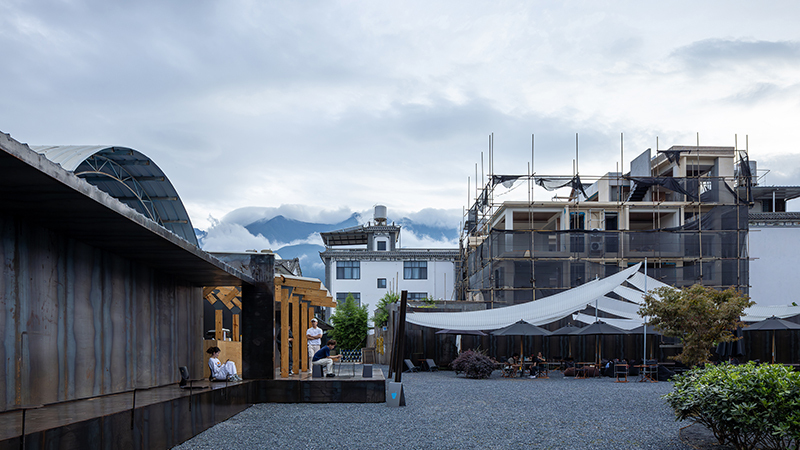▲鸟瞰图Aerial View
一、项目概况•Project Overview
项目位于杭州市富阳区洞桥镇贤德村后山坡地上,原址为三幢残破倒塌的石房与土屋,本次设计通过重新梳理原有场地关系,盘活闲置建设用地,重塑原有建筑,使其成为野生君(Grow wild)研学营地“嘟嘟村”的重要组成部分,其功能包含了泥瓦坊、茶艺坊以及陶艺吧三大部分,总建筑面积约为300㎡。
The project is situated on the back hillside of Xiande Village, Dongqiao Town, Fuyang District, Hangzhou. The original site consists of three dilapidated stone and mud houses. The design revitalized the idle construction land and reshaped the original building by reorganizing the relationship between the original site, making it an important part of the Grow Wild research and study camp "Dudu Village." With a total construction area of about 300㎡, its functions include a mud tile workshop, a tea workshop, and a pottery bar.
▲区位图Location Map
▲原始建筑Original Building
二、与自然对话•Dialogue with nature
富阳自古以来,以山水闻名,正如元代画家黄公望的《富春山居图》所绘,洞桥也不遑多让。因此,在设计之初便有了使建筑内外密切联系,让建筑空间与自然对话,令四季美景尽收于建筑使用者眼底的想法。
Fuyang has been famous for its landscape since ancient times, as depicted in the painting "Dwelling in the Fuchun Mountains" by Huang Gongwang, a Yuan Dynasty painter, and Dongqiao town is no less so. As a result, we had the idea at the start of the design to make the building blend the inside and outside, to make the building space and nature dialogue, so that the building users could see the beauty of the four seasons.
基地位于贤德村后山坡地上,是全村的制高点,具有极其宽阔的视野。游走于场地与建筑之间,由低到高,当你正在泥瓦坊一楼,可近观中央草坪区的草长莺飞、银杏叶黄、竹叶摇曳和后院石壁奇秀、树影婆娑;当你站在茶艺坊二楼,站在室内、露台和观景盒子,将欣赏到远山如黛,层峦叠嶂,延绵不断,村庄炊烟袅袅,将感受在三四月的田野遍地绿色的勃勃生机,在八月的田野漫天金黄的丰收喜悦。
The base is situated on the back hillside of Xiande Village, and it controls a commanding view of the entire village, with a very wide view. Strolling between the site and the building, from low to high, you can have a close view of the central lawn area, where grass grows and warblers fly, ginkgo leaves turn yellow, bamboo leaves sway, and the backyard stone walls are strange but beautiful, and trees dance. When you stand on the second floor of the building, standing in the interior, the terrace and the viewing box, You will enjoy the picturesque distant mountains, the endless mountains, the village smoke curling up, the green vitality of the fields in March and April, and the joy of the harvest in August.
▲茶艺坊Tea workshop
▲设计演绎 Design simulation
三、与场地对话•Dialogue with the site
场地位于村庄后山坡地上,依据场地现状与业主要求,将原始坡地处理成为两个台地并分别与两栋建筑的一层标高相衔接。其后是山体石壁以及竹林,其前则为宽阔的观景平台和依据地势设计游步道以及供学生嬉戏的大草坪,山坡之下则为村庄的农舍,远处则是田野和远山。
The site is on the back hillside of village. The original slope is processed into two platforms and connected with the elevation of the first floor of each building to meet the owner's requirements for site use. Behind the building is a bamboo forest and a mountain wall. In front of it, there is a large viewing platform, a terrain-appropriate walking path, and a large lawn for students to play on. A village farmhouse lies beneath the hillside, with a field and a distant mountain beyond.
▲改造后建筑Reconstructed Building
场地三面为村舍,都是小体量坡屋顶传统的江南民居建筑,因此项目实施的过程中,遵循原有传统村落的肌理及空间的结构层级,使项目成为成为整个村庄有机生长的一部分。
On three sides of the site, there are cottages, all of which are traditional Jiangnan residential buildings with small volumes and sloping roofs. As a result, during project implementation, the original traditional village texture and spatial structure level are followed, allowing the project to become a part of the organic growth of the entire village.
▲模型Architectural Model
项目保留了从原先荒废后场地里顽强生长起来的七棵乔木即四棵银杏树、一颗枇杷树及一棵苦楝,使其成为场地与建筑的重要组成部分,它们也是项目业主野生君团队“野蛮生长”的办学理念的真实写照。七棵树或与建筑相互倚重,相映成趣,成为场地的一道道风景,或成为建筑内庭的主角,与建筑融为一体。
Seven trees from the original abandoned backfield have been preserved, including four ginkgo trees, one loquat tree, and one neem tree, making them an important part of the site and the building. They are also a true reflection of the project owner's "wild growth" philosophy. The seven trees either rely on and complement one another, becoming the landscape of the site, or take the lead in the inner courtyard of the building, integrating with it.
▲庭院Courtyard
▲设计演绎 Design simulation
▲室内空间Interior space
四、地域性营建技术的应用•The application of regional construction technology
洞桥位于浙江中西部,杭徽石和生土是该地区最常用的建筑材料,垒石和夯土也是该地区最有代表性和应用最广的本土建造技术,区域内的现存老建筑基本上都为石房和土屋。项目在保留原有建筑部分石墙的基础上,就地取材,充分利用当地的垒石和夯土技术来重塑建筑,其中泥瓦坊和茶艺坊采用仿夯土的外墙做法而陶艺吧则采用的是杭徽石垒石的外墙做法。
Dongqiao Town is in Zhejiang Province's middle-western regions. The most commonly used building materials in this area are hanghui stone and raw earth, and the most representative and widely used local construction technologies in this area are rammed earth and rammed stone. The existing old buildings in this area are primarily stone and earthen structures. The project uses local materials and makes full use of local rammed earth technology to rebuild the building while retaining some of the original stone walls. The imitation rammed earth exterior wall method is used by mud tile workshop and tea workshop, while the pottery bar is the practice of using hanghui stone base stone exterior wall.
▲杭徽石外墙 Hanghui stone exterior wall
五、传统与现代的设计手法的碰撞•The collision of traditional and modern design methods
项目整体布局和空间组织采用了中国传统建筑的园林式布局方式和空间处理方法。场地东南入口处的曲折迂回,欲扬先抑;中央草坪区因草为水,以木为桥,曲径通幽;后院是石壁密林;前院大树参天;建筑室内对于室外景色近借远用,置庭入内;在场地内整个漫步过程中,随着时间和光影的变化,树木和建筑交替出现在眼前,得景随行形成一幅幅的风景画面。这些设计手法既是中国传统的,又与现代建筑中的漫步空间或流动空间等现代建筑设计手法有着异曲同工之秒。
The overall layout and spatial organization of the project are inspired by traditional Chinese architecture's garden-style layout and spatial processing method. To highlight the subsequent space, the site's southeast entrance twists and turns. In the central lawn area, grass serves as water, wood serves as a bridge, and a winding path leads to a secluded spot. The stone walls in the backyard resemble dense forests, and the trees in the front yard are towering. The interior of the building borrows the outside scenery, and the exterior scenery is brought into the courtyard. As one walks through the site, trees and buildings will alternately appear in front of one's eyes as time and light change, creating a series of landscape scenes. These design methods are both traditional Chinese and modern, such as promenade space or flowing space
▲总平面 Master plan
▲入口处节点 Image of entry node
▲改造后 After transforming
▲休憩空间 Rest space
中国传统园林中讲究的是天人合一,通过可以灵活打开的槅扇,把室外的自然都引入室内,在本项目的设计中,继承和发扬这种理念,通过现代建筑的技术手段和方法如落地玻璃窗、大转角窗以及取景盒子将场地周围秀逸的自然风光引入室内,包括有树林、石壁、稻田、远山等。同时将传统的大挑檐坡屋顶建筑形体和现代的几何体通过现代几何形体构图方法融为一体,既传统又兼具现代特征。通过将传统的石墙、夯土与现代的铝板、玻璃碰撞结合,实现了传统和现代营建技术、材料的相融合,为当下建筑对乡村文脉的传承做了有益探索。
The harmony of nature and human is emphasized in traditional Chinese gardens. The outdoor environment can be brought inside by flexibly opening partition board door. This concept is inherited and carried forward in the design of this project, as well as through the technical methods of modern architecture. Floor-to-ceiling glass windows, large corner windows, and viewing boxes, for example, bring the beautiful natural scenery (such as woods, stone walls, rice fields, and distant mountains) surrounding the site into the interior. Simultaneously, the traditional large overhanging sloping roof architectural form and modern geometry are integrated via a modern geometry composition method that is both traditional and modern. The integration of traditional and modern construction techniques and materials has been realized through the collision and combination of traditional stone walls and rammed earth with modern aluminum plates and glass, and a beneficial exploration for the inheritance of rural culture in current architecture has been made.
▲观景盒子Viewing box
▲材质对比Material comparison
技术图纸
▲纵向剖面Longitudinal profile
▲总平面Site-plan
▲一层平面First floor plan
▲二层平面Second floor plan
▲屋顶平面Roof plan
项目基本信息
项目名称:野生君乡村研学和劳动教育营地
项目类型:乡建
项目地点:杭州富阳
主创建筑师:陈益龙、陈狄、黄炜、王雪如
设计团队完整名单:赵琪、赵康、沈继煊、胡敏
业主:野生君
建成状态:建成
设计时间(起迄年月):2020
建设时间(起迄年月):2021
建筑面积(平方米):300平方米
摄影师:陆伟杰
更新日期:2022-08-24 14:31:15
非常感谢 乐匠建筑工作室 带来的精彩项目, 查阅更多Appreciations towards Le’Architects for sharing wonderful work on hhlloo. Click to see more works!
